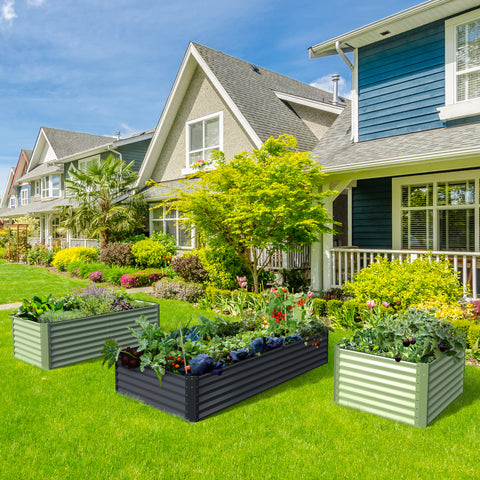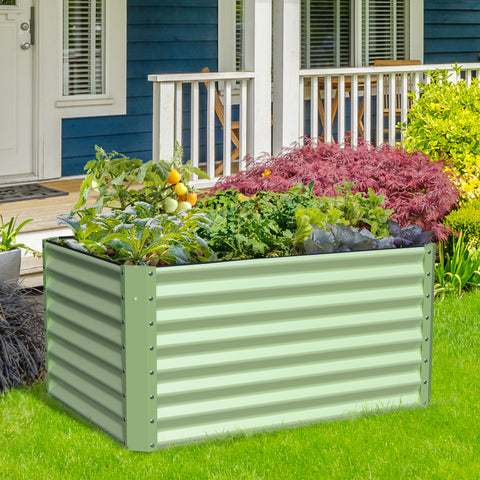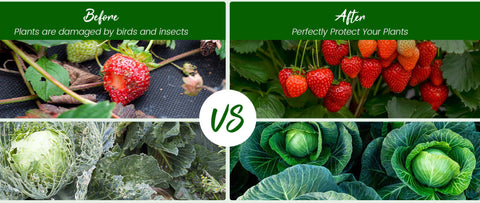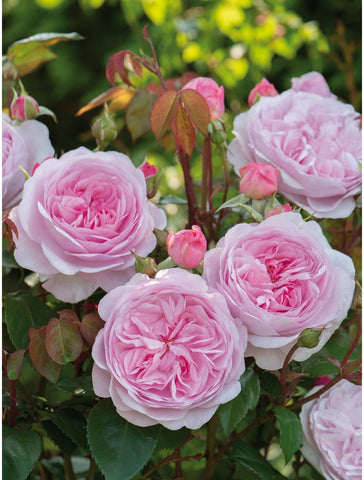How do you attract bees to pollinate your garden?The following content also has some reference value for raised garden beds.

What plants attract bees most to your garden?
These are two common but sometimes difficult questions for gardeners to answer.
But they don't have to be!
Here is a list of the top 20 plants that attract bees.
Not only that, but the plants can be harvested for other purposes!
If you keep scrolling down, you'll learn how to attract bees to your garden in 10 easy ways!
50 useful plants to attract bees
Before we review 50 useful bee-attracting plants, it is first important to keep in mind two important factors when looking for useful bee-attracting plants.
- Easy to grow plants
You should plant plants that are suitable for your hardy area, or that are native to where you live. These are usually the easier plants to grow in your area.
Find out what Hardiness zone you're in: USDA Plant Hardiness Zone Finder
- Easy to find plants
Buying plants at your local nursery, if you can't find them there or on the Amazon, then most likely means the plant is hard to find.

Plants that attract bees in Spring (#1-7)
- Blueberry bushes
- Genus :Vaccinium
- Cold tolerance zone :4 ~ 10
- Life cycle: Perennial
- Size: 6ft x 4ft
- Light requirements: Full sun
Blueberry bushes are a highlight of the garden.
They provide delicious and nutritious fruits every year. They are relatively easy to take care of. They are a great plant and bloom in spring to attract bees.
If you want to learn how to grow blueberries, I suggest you watch the following video:
Blueberries grow best in the following areas:
Rich, well-drained soil
Acidity pH 5.0
- Water weekly
- Red fruit trees
- Genus: Apple (Malus Sylvestris)
- Cold tolerance zone :4 ~ 8
- Life cycle: Perennial
- Size: 15ft x 15ft
- Light requirements: Full sun
The crabapple tree has many uses. When they bloom, they are absolutely beautiful. They are also good cross-pollinators for most fruit trees.
Not only that, but they can grow in a wide range of areas and soil types.
On top of that, they're one of the most attractive trees for bees.
Hawthorn grows best in the following areas:
Rich, well-drained soil or peaty soil
Acidity pH 6.0 ~ 8.0
- Water should be given every two weeks
- Hazelnut trees
- Genus :Corylus
- Cold tolerance zone :5 ~ 8
- Life cycle: Perennial
- Size :18 feet by 18 feet
- Light requirements: Full sun
Hazelnuts are the perfect, easy to grow, disease-resistant nut for you!
They are great for people looking to add to their garden landscape. They also crack easily, are delicious nuts, and look beautiful in the fall.
On top of that, they are one of the most attractive nuts and plants for bees!

Hazelnuts are best grown in:
Rich, peat, or silty soil
Acidity pH 6.0 -7.0
- Water should be given every two weeks
- Cranberries
- Genus: Oxycoccus vaccinis
- Cold tolerance zone :2 ~ 7
- Life cycle: Perennial
- Size: 1ft x 3ft
- Light requirements: Full sun
When you think of cranberries, you probably think of Thanksgiving. But there's so much more to these bushes!
They make an excellent ground cover, are very hardy and easy to maintain.
Plus, they're perfect tarts for muffins, desserts, and other foods.
Plus they're a great plant that attracts bees, you can't beat it!
Cranberries grow best in the following areas:
Rich, well-drained soil
- Acidity pH 4.0-5.0
- Water weekly
- Chives
- Genus Allium schoenoprasum
- Cold tolerance zone :3 to 7
- Life cycle: Perennial
- Size :1 foot by 1 foot
- Light requirement: Partial sunlight
Chives are probably one of the most underrated herbs.
They can be used in salads, potato dishes, sauces, omelets, and more!
The best thing about this versatile herb, though, is that it's a great plant to attract bees to your garden!
Leeks grow best in the following areas:
Rich, well-drained soil
Acidity pH 6.0-7.0
- Water should be given every two weeks
- Rosemary
- Genus :Salvia Rosemarinus
- Cold tolerance zone :3 to 7
- Life cycle: Perennial
- Size :2 feet by 2 feet
- Light requirement: Partial sunlight
Here's an interesting fact about Rosemary. You used to read poems and stories at school about the Greek goddess wearing it around her neck.
Since we're not Greek goddesses, let's focus on some of its great uses. Rosemary can be used as a garnish to add flavor to many dishes and is the perfect complement to chicken and meat.
Not only that, it is a drought-tolerant herb and a great plant to attract bees to the garden.
Rosemary is best grown in:
Rich, well-drained soil
- Acidity pH 6.0 to 7.5
- Water should be given every two weeks
- Lavender
- Genus: Lilac
- Cold tolerance zone :3 to 7
- Life cycle: Perennial
- Size :15 feet by 12 feet
- Light requirement: Partial sunlight
Cloves are a plant that has more uses than we know.
Part of your landscape, or a great addition to your garden.
Anyway, when it blooms, you can't forget its smell. Neither do the bees. It's a bee favorite in almost every region of the country!
Cloves grow best in the following areas:
Rich, well-drained soil or peat soil
Acidity pH 6.5-7.0
- Water should be given monthly
Summer (#8-17)
- Blackberry bushes
- Genus: Rubus
- Cold tolerance zone :6 ~ 8
- Life cycle: Perennial
- Size: 5ft x 4ft
- Light requirements: Full sun
Are you interested in self-sufficient fruit plants?

Then plant blackberry vines on your homestead. The blackberry is a plant that attracts bees very much. Plus, it's one of the tastiest berries.
If you're interested in eating foods that are rich in nutrients and antioxidants, then this is for you!
If you want to learn how to grow blackberries, watch the video below:
Blackberries grow best in the following areas:
Rich, well-drained soil
Acidity pH 7.0
- Water should be given monthly
- Catnip
- Genus :Nepeta Cataria
- Cold tolerance zone :4 ~ 8
- Life cycle: Perennial
- Size :2 feet by 2 feet
- Light requirement: Partial sunlight
When it comes to herbs, catnip can be a jack of all trades.
We use it for the common cold. It is used to repel insects. It is most famous for being used as a recreational item by cats.
But don't forget one of its most underrated benefits: it's a great bee magnet.
Where Catnip grows best:
Rich, well-drained soil
- Acidity pH 6.0 to 7.5
- Water should be given every two weeks
- Lavender
- Genus: Lavender
- Cold tolerance zone :5 ~ 9
- Life cycle: Perennial
- Size: 3ft x 3ft
- Light requirement: Partial sunlight
Lavender is probably my favorite plant!
It smells great, has many herbal and medicinal uses, and is a great herb to add colour to your garden
It's also one of the most bee-attracting plants on this list!
- Related: How to grow lavender from seed :15 easy tips
Lavender is best grown in:
Rich, well-drained soil
- Acidity pH 6.0 to 7.5
- Water should be given every two weeks
- Raspberry bushes
- Genus :Rubus Idaeus
- Cold tolerance zone :4 ~ 8
- Life cycle: Perennial
- Size: 5ft x 4ft
- Light requirements: Full sun
- This is the last post for this blog. Just like blueberries and blackberries, it's packed with incredible nutrients.
You can eat raspberries raw. Make the sauce and syrup. Bake pies with them. On top of that, they're another great plant that attracts bees.
- If you want to grow raspberries, I suggest you check out the video below:
Raspberries grow best in the following areas:
Rich, well-drained soil
Acidity pH 5.5-6.5
- Water should be given monthly
- Sunflower
- Genus: Sunflower
- Cold tolerance zone :4 ~ 9
- Life cycle: Every year
- Size :12 feet by 1 foot
- Light requirements: Full sun
Did you know there are more than 70 kinds of sunflowers?
I'll let you decide what to plant in your garden.
Like all other plants, sunflowers provide us with a great deal of nutrition. In addition, it is a pollinator for birds. And bees!
Sunflowers grow best in the following places:
Rich, well-drained soil or peat soil
- Mint
- Genus: Mint
- Cold tolerance zone :4 ~ 9
- Life cycle: Perennial
- Size :2 feet by 2 feet
- Light requirement: Partial sunlight
Did you know that peppermint Juleps aren't just for the Kentucky Derby?

They repel pests as well as attract beneficial insects. In addition, they are one of the few anti-deer herbs.
They spread very quickly and widely. In addition, they are found in almost all Thai dishes around the world.
Rich, well-drained soil
Acidity pH 6.5-7.0
- Water should be given monthly
Related: How do you grow mint
- Thyme
- Genus: Thymus
- Cold tolerance zone :4 ~ 8
- Life cycle: Perennial
- Size :2 feet by 2 feet
- Light requirement: Partial sunlight
An aromatic evergreen herb that has been used throughout history. Thyme is one of the few herbs that was used as an "antibiotic" before antibiotics.
In addition, thyme can be used in many dishes, along with tea. A distant relative of oregano and mint, it is a great bee magnet.
Thyme grows best in:
Rich, well-drained soil
- Acidity pH 6.0-8.0
- Basil
- Genus Ocimum Basilicum
- Cold tolerance zone :4 ~ 8
- Life cycle: Every year
- Size :2 feet by 2 feet
- Light requirement: Partial sunlight
If you've tried pesto before, you know how good Basil is.
This herb is native to Italy and has an unbeatable smell. It's great for pesto, capri salads, and pasta.
Not only that, but it's the perfect herb to grow in a pot. That means you can move it anywhere to attract bees.
Basil is best grown in:
Rich, well-drained soil
Acidity pH 5.5-7.5
- Water weekly
- Related: How to grow basil from seed
- Wallflowers
- Erysimum
- Cold tolerance zone :3 ~ 10
- Life cycle: Every year
- Size :3 feet by 2 feet
- Light requirements: Full sun
The wallflower is a plant that few people grow and even fewer people use.
But luckily, Garden Dad has planted it and strongly recommends planting it.
Not only is it a good plant to attract bees, but it can be used to help with constipation, gallbladder diseases, etc.
The best Places to grow wallflowers:
Rich, well-drained soil
Acidity pH 7.0-9.0
- Water should be given monthly
- The Saint
- Cold tolerance zone :4 ~ 8
- Life cycle: Perennial
- Size :2 feet by 2 feet
- Light requirement: Partial sunlight
As you know by now, herbs are one of the best plants to attract bees and for other purposes.
Sage happens to be one of the most versatile herbs.
It's delicious in wontons. Helps relieve stomach pain. It's even been linked to preventing memory loss.
No wonder bees are attracted to it!
Best places to grow sage:
Rich, well-drained soil
Acidity pH 6.0-7.0
- Water weekly
- Related: How can a beginner grow into a saint
Autumn (#18-25)
- Pumpkin
- Cold tolerance zone :4 ~ 8
- Life cycle: Every year
- Size :2 feet x 4 feet
- Light requirements: Full sun
When you think of Halloween pumpkins, the first thing you think of is pumpkins.
Pumpkins have amazing uses. Their seeds are superfoods. They can be used to make the famous pumpkin pie. Their ability to attract bees is incredible.
Pumpkins grow best in the following areas:
Rich, well-drained soil
Acidity pH 5.5-7.5
- Water weekly
- Pumpkin
- Genus: Calabash
- Cold tolerance zone :4 ~ 8
- Life cycle: Every year
- Size :1 foot by 2 feet
- Light requirements: Full sun
Pumpkin and pumpkin are the same food. However, they have different uses and can attract different types of bees.
This may not be news to you. But do you want to know something that most gardeners don't?
These plants are planted with each other, and you have a greater chance of attracting more different types of bees.
Pumpkins grow best in the following areas:
Rich, well-drained soil
Acidity pH 7.0

- Water weekly
20.Aster
- Genus: Compositae
- Cold tolerance zone :3 ~ 8
- Life cycle: Perennial
- Size: 6ft x 4ft
- Light requirements: Full sun
It was a beautiful flower. It bloomed late.
It can be used for stomach aches, fevers and earaches. Not only that, but it will also attract bees to your garden.
The best places to grow aster:
Rich, well-drained soil
Acidity pH 5.5-6.5
- Water should be given monthly
Here are 10 ways to attract bees to your garden:
Plants rich in nectar -- nectar provides sugar for bees. It's their main source of energy. Without it, they can't work or pollinate.
Pollen-rich plants - Pollen provides protein and fat for bees. Without that, they can't survive.
Plant Native Species - Plant species are native to where you and your bees live. The better the bees recognize the plant, the more likely they are to visit it.
Plant Non-invasive Species - Don't plant invasive species. They replace native and bee-friendly plants. That means fewer bees to pollinate your garden!
Make a bee bath - provide a shallow dish on the ground near the garden. The added rock. Add fresh water (do not flood the rocks). This will provide a valuable source of water for your bees.
Build a Beehive - Watch this video on how to build a beehive: Build a beehive.
Location, location, location - Putting your hives and bee baths in the right location is crucial. Choose a sunny spot that is not exposed to constant wind.
Don't use pesticides - if you use pesticides on your property, it will kill the plants that attract bees and the bees themselves.
Use heir-plants - Look for plants or seeds that do not contain neonicotinoids. If it has this condition, it means it has been treated with insecticides that repel or kill bees.
Multipurpose attractors - Find plants that attract not only bees, but butterflies and hummingbirds as well.









